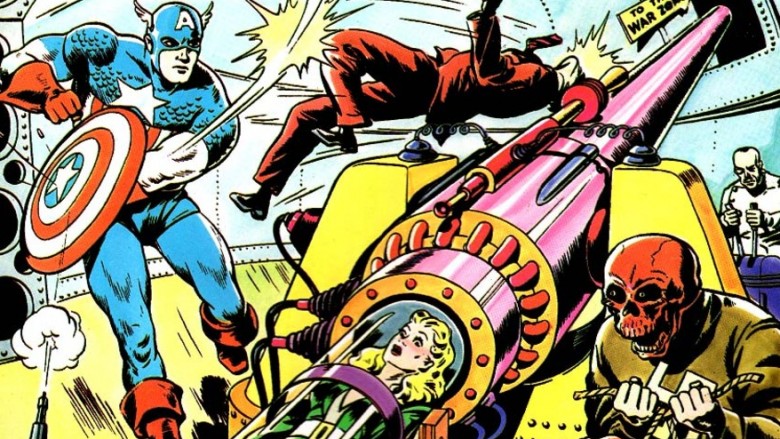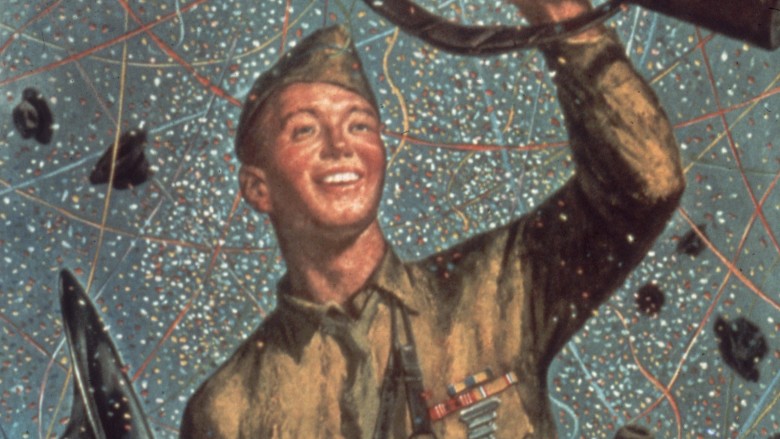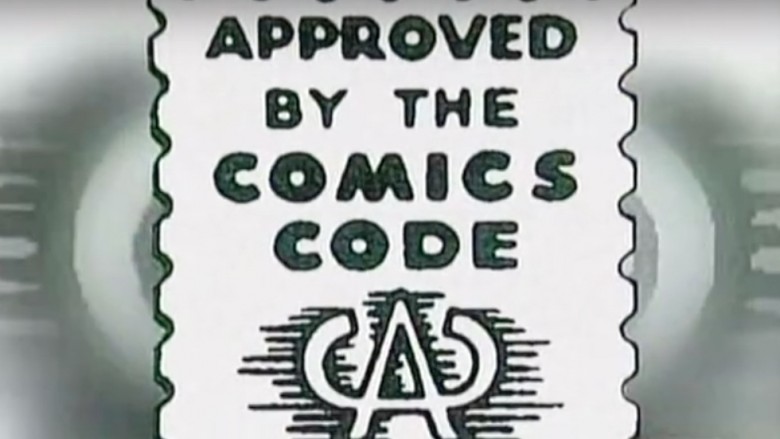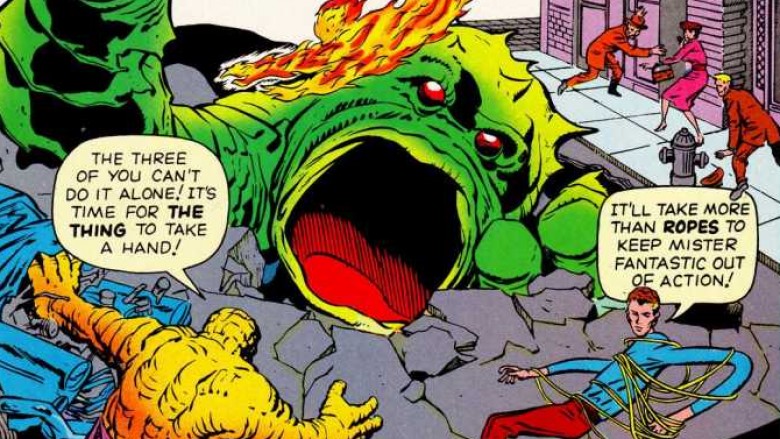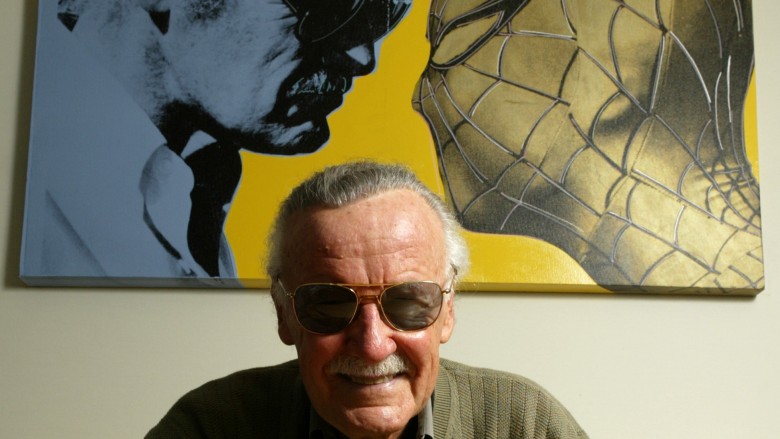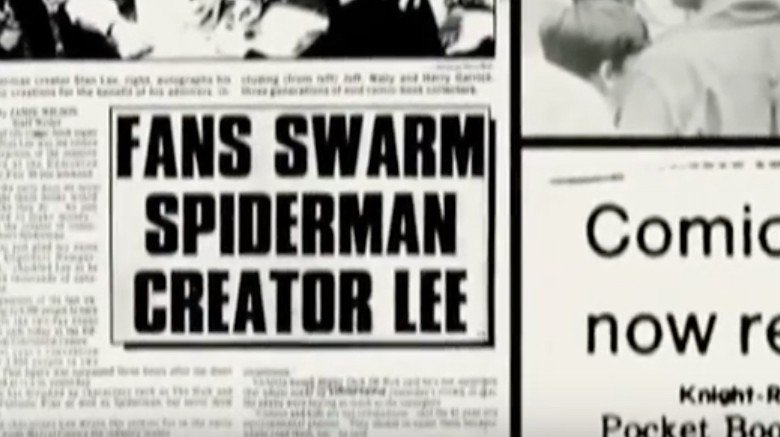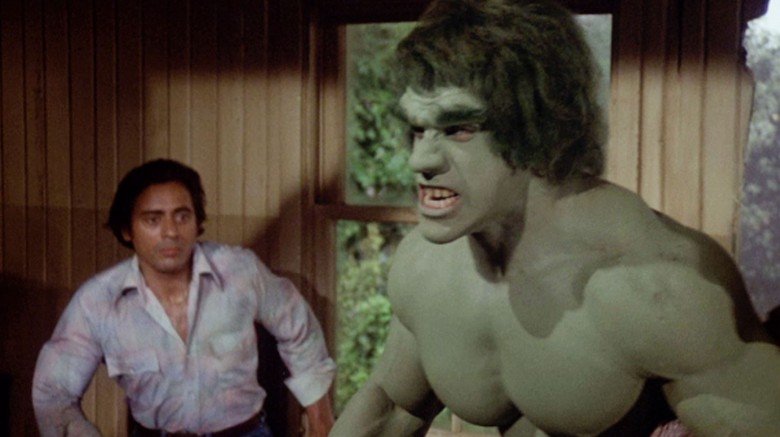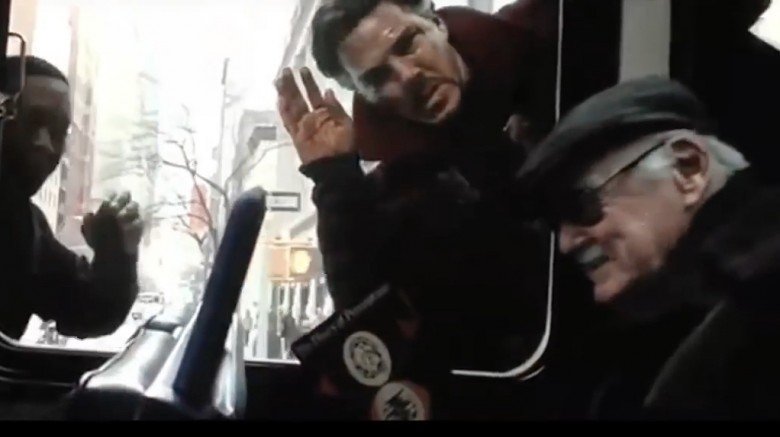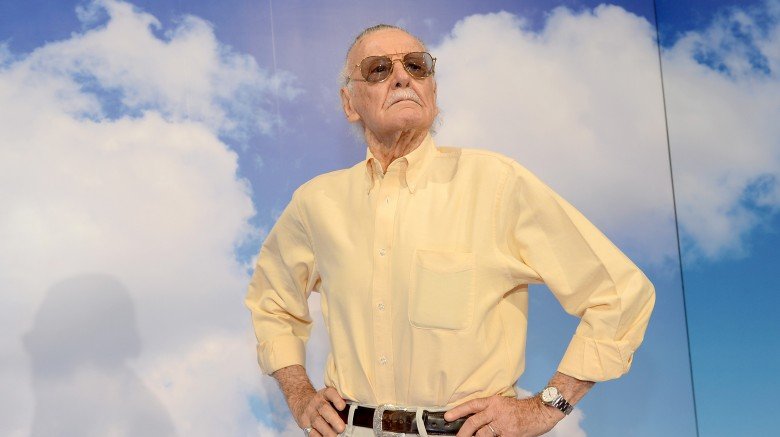How Stan Lee Went From Delivering Sandwiches To The Face Of Marvel
intro
Stan "The Man" Lee is a pop culture titan. His grinning mug is as familiar as any of the characters he's been involved in creating—a roster that reads like a list of posters young children are required to own, including Spider-Man, Iron Man, the Incredible Hulk, Daredevil, and the X-Men, just to name a few. At 94, he's been around long enough to see these creations—most of which debuted in the '60s—become household names, not to mention the basis of the highest-grossing film series of all time. His journey has been remarkable, but he started out just like the rest of us: doing menial labor while dreaming of bigger things.
His early jobs weren't what you'd expect
As a young man, Lee—who was born Stanley Martin Lieber—was, like a lot of young people, somewhat lacking in direction. The son of Jewish immigrants from Romania, Lee worked odd jobs during his high school years to help his family get through the tail end of the Great Depression. Even though he was an avid reader and enjoyed writing as a teen, his early gigs had nothing to do with those passions.
Lee's first jobs included delivering sandwiches for the Jack May Pharmacy in Manhattan, helping out in the office of a local manufacturer of trousers, and working as a theater usher. His earliest association with the publishing industry was a gig selling subscriptions for the New York Herald Tribune, and his first actual writing gigs involved cranking out obituaries for the wire service and press releases for the National Tuberculosis Center.
Not long after graduating high school at 16, one of Lee's uncles—who was the brother-in-law of publisher Martin Goodman—hooked him up with a job within a small division of Goodman's publishing company. He was probably only looking at it as a stepping stone to the world of real publishing, but it would become much, much more.
Working for Timely Comics
Lee joined what was then known as Timely Comics in 1939, filling the artists' inkwells and essentially acting as an errand boy. Editor Joe Simon, who along with artist Jack Kirby had created a certain star-spangled character that was doing very well for Timely, eventually started giving him proofreading jobs, and in 1941 the still-teenaged Lee was given the assignment of writing a text-only story to serve as filler in Captain America Comics #3. For this story, "Captain America Foils the Traitor's Revenge," he used the pseudonym Stan Lee—intending to save his real name for his future career as a serious writer of fiction novels.
Within months, the imaginative new kid was off creating superheroes of his own with names like Jack Frost and Father Time, and they were selling books. Just before Lee turned 19, Simon left over a dispute with Goodman, taking star artist Kirby with him. Goodman named Lee interim editor, and the "interim" wouldn't stick for long. Lee was poised to jump into the comics world with both feet, but before his career could really take off, world events would force him on a brief detour.
A stint in the Army
Stan Lee joined the U.S. Army in 1942, and even that outfit managed to find uses for his burgeoning talents. He was first assigned to the Signal Corps, where he wrote manuals and slogans and even a few cartoons, but before long ended up in the Army's Training Film Division writing scripts. His gift for making words pop already evident, he was one of only nine people in the entire Army whose title was listed as "playwright."
During his absence, the editor of the kids' comics division filled in as editor-in-chief. When the war ended, Lee—still only 23—reclaimed the post, and wouldn't give it up for a couple decades. Unfortunately, the comics industry for a great deal of that time was in an enormous creative rut, which was a direct result of the influence of the infamous Comics Code Authority.
He almost quit the industry
While controversy over content in comics had already raged for years, it really started heating up in the early '50s, when an overzealous psychiatrist who was convinced that comics were destroying America's youth started hauling publishers in front of Senate committees. Some of these, like horror publisher EC, were forced to completely revamp their content after a strict set of content regulations known as the Comics Code went into effect in 1954.
The whole of the industry experienced the kind of creative cooling effect you might expect from this development, and by the late '50s Stan Lee—feeling that nobody respected comics anymore—was disenchanted enough to consider quitting the industry for good. It was at this point, as Lee himself tells it, that his wife Joan gave him the best advice anybody has ever given anyone: "She said, 'Write a few books the way you want to do it, instead of the way they tell you to do it. The worst that'll happen is you'll get fired, but you want to quit anyway.' So that's when I did The Fantastic Four, and luckily it sold better than all the other books."
Then, he reinvented it
By this time, Jack Kirby had been lured back to the company that was now known as Marvel Comics Group. Stan Lee and Kirby took inspiration from competitor DC's recent revamp of all of their old golden age characters, with updated versions of Batman, Superman, and Wonder Woman, along with the Flash, Green Lantern and Hawkman. The team book Justice League of America was selling like crazy, and publisher Goodman directed Lee and Kirby to come up with a superhero team of their own; he may not have expected his mandate to change comics forever.
In November 1961, Fantastic Four #1 introduced readers to a superhero team far more relatable than anything they'd seen on the comics pages before. In between battling supervillains and interdimensional threats, the team bickered, squabbled and generally acted like you'd expect regular, flawed people who were suddenly given superpowers to act. It was a startling contrast to DC's godlike heroes, and a way of approaching costumed crimefighters that had simply never been attempted before.
The book had a seismic impact on the industry, and its immediate success led Goodman to order basically as many new titles as Lee and his staff could come up with. Aside from Kirby—who has earned the nickname "King" and briefly had an award that bore his name—this staff included future legends like Bill Everett, the co-creator of Daredevil, and Steve Ditko, who'd help Lee create one of the most iconic characters in all of pop culture.
The Avengers, X-Men and his greatest creation
As a kid, Stan Lee had been a fan of a pulp magazine character called the Spider, "Master of Men," which gave him the idea to approach Goodman about introducing a teen character with spider-themed powers. As Lee recounts: "My publisher said, in his ultimate wisdom, 'Stan, that is the worst idea I have ever heard... first of all, people hate spiders. Secondly he can't be a teenager—teenagers can only be sidekicks.'"
Still, the idea wouldn't go away, and Lee resolved to stick the character into an issue of the series Amazing Fantasy, which was due to be canceled. Kirby's first crack at the character's design was too superhero-like for Lee, who was obsessed with the idea of an average, geeky, insecure teenager who has the absolute misfortune of suddenly being granted amazing powers. So Lee had Ditko take a crack at it, and his rendering of the Amazing Spider-Man was good enough to remain largely unchanged to this day.
After Amazing Fantasy #15—the book's final issue—went flying off the shelves, Spidey was quickly given his own series, with issue #1 featuring the red-hot Fantastic Four. Throughout the '60s, subsequent characters like Daredevil and Doctor Strange (also co-created by Ditko) would continue to redefine what a superhero could be, and Lee would also create two superhero teams—the Avengers and X-Men—that would prove to have pretty long legs in pop culture.
Fans got to know his personality
During this time, "Stan the Man" became well known among fans for his frequent editorial columns, with titles like "Bullpen Bulletins" and "Stan's Soapbox." He adopted a lively and informal writing style, engaging fans over characters and plot lines, and made the "Marvel bullpen" of writers and artists sound like the job every single kid in his reading audience desperately wanted to have. He started signing off each column with the New York State motto, "Excelsior!"—a word that every comics fan would come to know by the mid-'70s—and created the "Merry Marvel Marching Society" fan club, which included a record that let fans hear the voices of the bullpen, generally building the company's image around the personalities of himself and his staff.
These things made fans feel like they were part of a special group rather than just consumers, and Stan's regular columns helped them sort out the intricacies of all of the interconnected series—the Marvel Universe, which was growing so fast that volumes of official handbooks started to be published by 1982. Stan Lee had always had a vision for bringing this universe into TV and film, but it would take some false starts and several decades for Hollywood to catch up.
Branching out into other media
In the '70s, a great many stabs were taken at adapting Marvel properties to television, beginning with its most popular: The Amazing Spider-Man debuted on CBS as a TV movie in September 1977. While the technical limitations of depicting Spidey's abilities were obvious, and many questioned the casting of 27-year old Nicholas Hammond as Peter Parker (which would become a recurring theme with the character), fans were nevertheless thrilled to have a live-action version of the webslinger airing in prime time—but it wouldn't last. CBS pulled the plug after two seasons, fearing overkill because of its more successful Marvel adaptation, The Incredible Hulk.
Featuring Bill Bixby as Dr. Banner (named David in this version) and Lou Ferrigno as his rampaging green alter ego, The Incredible Hulk aired for five seasons between 1978 and 1982, and helped to cement the character in the pop culture consciousness. Three made-for-TV movies after the series' end would also introduce the first live-action versions of Daredevil and Thor, and Ferrigno retains a friendly association with Marvel to this day—he even returned to voice the Green Goliath in the 2008 film, in which he also cameos as a security guard.
Other attempts at launching series based on Doctor Strange and Captain America through TV movies didn't work out quite so well, and it would be years before Stan Lee's vision of a multimedia Marvel Universe would begin to take shape—years filled with some pretty tough luck and hard decisions for the company.
Hard luck, film rights, and cameos
After a sustained period period of booming success throughout the '80s and early '90s, the entire comics industry hit a severe slump which caused Marvel's value to plummet to less than a tenth of its high over just three years. Facing bankruptcy, the company famously sold the film rights to many of their most popular characters—the Fantastic Four, X-Men and Daredevil to Fox, the Hulk to Universal, and Spider-Man to Sony. Throughout it all, Stan Lee continued to be an ambassador for the brand, and when the first project to result from these deals finally hit the screen he stumbled upon what has today become his signature: the well-placed cameo.
In 2000's X-Men, Lee appeared as a hot dog vendor in a crowd shot. Since then, he's shown up in virtually every film with the Marvel logo attached regardless of the production studio, and both of ABC's television series. Tony Stark mistook him for Hugh Hefner in Iron Man, and he's popped up in every one of the 13 MCU installments to be released since. True believers might worry that the MCU's ramped-up production schedule might be too much for Lee to handle in the future, but fear not: his next four have been shot already. His cameos have become as anticipated as the now-obligatory post-credits sequences, and even inspired an interesting fan theory that he actually plays the same character in every appearance.
The face of Marvel
Since the beginning of Marvel's rise to pop culture dominance over 50 years ago, Stan Lee's face and personality have only grown more associated with the brand. He's lent his voice to video games and cartoons, made constant appearances at comic conventions for decades—anything he can do to keep his beloved Marvel Comics and its roster of iconic characters front and center in the public eye. He couldn't be any more the face of Marvel if he were actually Spider-Man...which, you never know, he might be.
It all became possible because a creative kid with an illustrious background in sandwich delivery and a struggling young industry took a chance on each other—and because that kid happened to see in that industry the multimedia juggernaut it could become. And—let's not forget—because of Joan Lee, the greatest advice-giver there ever was, to whom comics fans the world over are in debt. Excelsior!


